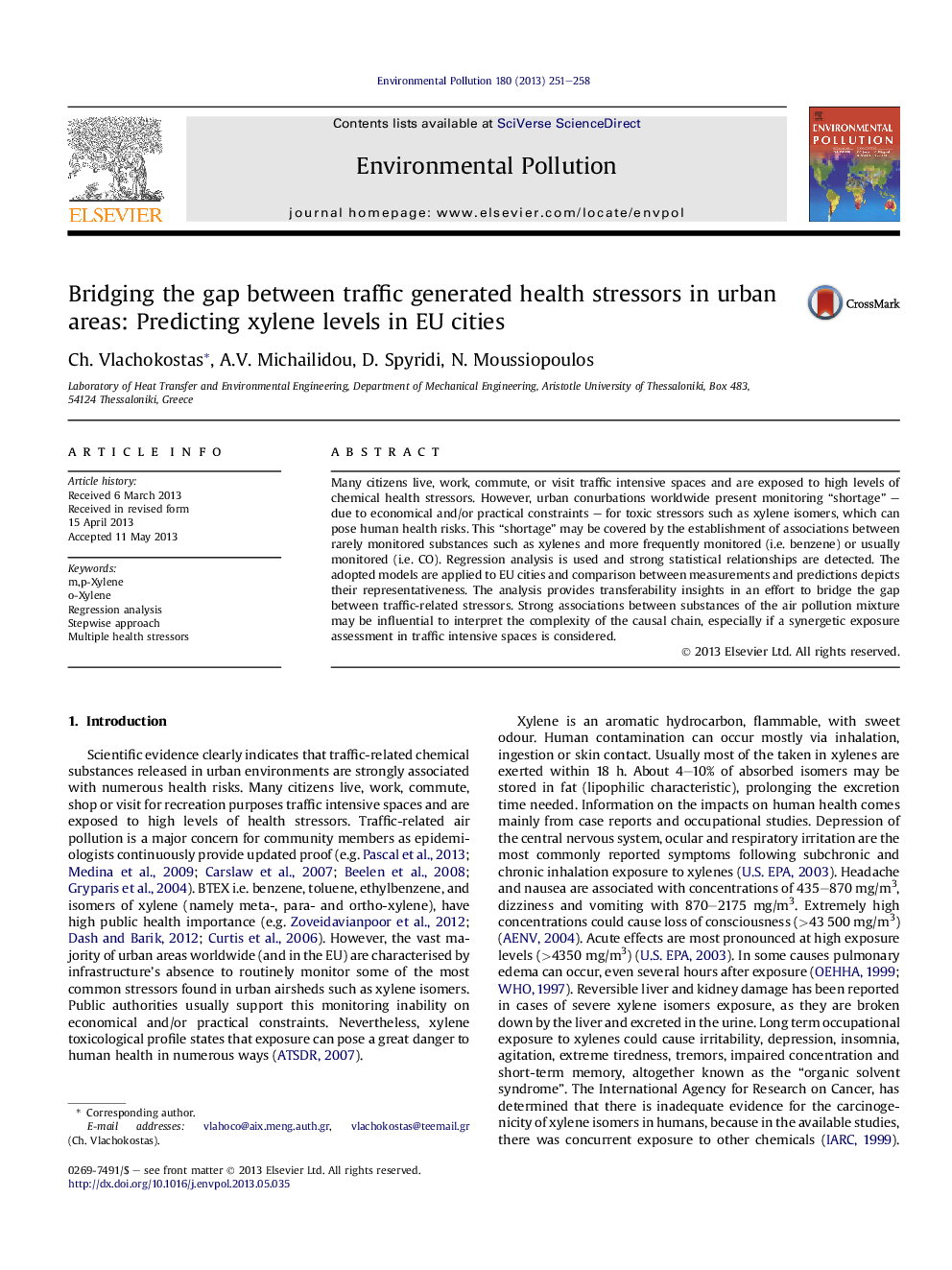| Article ID | Journal | Published Year | Pages | File Type |
|---|---|---|---|---|
| 6317749 | Environmental Pollution | 2013 | 8 Pages |
Abstract
Many citizens live, work, commute, or visit traffic intensive spaces and are exposed to high levels of chemical health stressors. However, urban conurbations worldwide present monitoring “shortage” - due to economical and/or practical constraints - for toxic stressors such as xylene isomers, which can pose human health risks. This “shortage” may be covered by the establishment of associations between rarely monitored substances such as xylenes and more frequently monitored (i.e. benzene) or usually monitored (i.e. CO). Regression analysis is used and strong statistical relationships are detected. The adopted models are applied to EU cities and comparison between measurements and predictions depicts their representativeness. The analysis provides transferability insights in an effort to bridge the gap between traffic-related stressors. Strong associations between substances of the air pollution mixture may be influential to interpret the complexity of the causal chain, especially if a synergetic exposure assessment in traffic intensive spaces is considered.
Related Topics
Life Sciences
Environmental Science
Environmental Chemistry
Authors
Ch. Vlachokostas, A.V. Michailidou, D. Spyridi, Î. Moussiopoulos,
